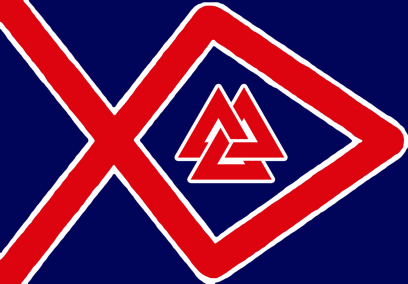| Category: Corporate Police State | ||
| Civil Rights: Some |
Economy: Frightening |
Political Freedoms: Rare |
Regional Influence: Apprentice
Location: Nordic Lands
30
Brief History of Askerike
It is fabled that the Original Kingdom of Askerike was but one of many fiefdoms under the rule of King Sćmingr, a direct descendant of Odin. The Fable Continues that at the death of King Sćmingr the fiefdoms were split amongst his many sons and Askerike was granted to King Sćmingr's youngest but most ambitious son, Hákon the Victorious. Hákon sought conquest, and warred with many of his brothers, slaying them and taking their fiefdoms into his Kingdom of Askerike. From Hákon the Victorious Askerikean Monarchs take their Royal House name of Hákon, as All Askerikean Kings claim descent from Hákon the Victorious and by de facto Odin himself. It is Customary for the Ruling King of Askerike to be known by their Given name and then the Royal House ie. King Eiríkr Hákon, However, upon their death Askerikean Kings are known by their traditional name i.e. Eiríkr Korisson. Before ascending to the throne they are also referred to by this traditional naming scheme with their appropriate title of Prince.After these legends there are little known about Askerike's history until the the late 600's A.D. The Earliest known king of Askerike is recorded as being Válđemarr The Defender, Whom led Askerike's Naval forces to a decisive battle where Askerike crushed the Powerful Ruler of Hlađir and cemented Askerike's military power for hundreds of years to come.
In the Year 999 Askerikean Reinforcements lead by King Haukreiđi Hákon were dispatched to the Norse Kingdom of Dublin, but arrived much too late. The Askerikean force, estimated to be less than 3500 men but greater than 2000 that sailed in a fleet of around 70 ships, wreaked havoc in the south of Munster and then returned mostly intact to Askerike. Then in 1014 Prince Ţórkki Haukreiđisson returned to Ireland under the orders of his father King Haukreiđi to aid the Norse Kingdom of Dublin once more. Haukreiđi was reluctant to send troops after the Norse Kingdom of Dublin's defeat in 999 but to keep his word of alliance he sent his heir and oldest son Ţórkki with a battle force of 1500 men. Prince Ţórkki would arrive late to the battle of Clontarf, and his forces were not enough to tip the scales in the favor of the Norse. Valient Ţórkki, fighting a losing battle, fought bravely with his personal guard through the Irishmen. They would against all odds make it through the battle lines and into the Irish camp, where Prince Ţórkki slew Brian Ború High King of the Irish. Brian Ború, an aged man, was alone praying in his tent when Ţórkki and his guard stormed in and slew him. Bróđir of Man would take credit for this kill as he was found in Brian Ború's tent looking for plunder.
During World War II King Sverkr "Svartsteinnsson" Hákon traded a piece of Land to it's Neighbor of Jerenia for Alliance, Favor, and Good Will. On King Sverkr's death in 1947 his oldest son, Kori Sverkrsson, assumed the throne and ruled until the Communist Revolution of 1973 which effectively ended the Kingdom of Askerike.
The Communist Party of Askerike ruled Askerike from 1973 to 1988. During this period of time the borders of Askerike were closed to all Non-Soviet nations. However, the Communist party grew corrupt and became a mere puppet of the USSR Machine. In 1985 Exiled Prince, Eiríkr "Korisson" Hákon had started raising an army to reclaim his throne. By the end of 1987 Hákon had reclaimed the vast majority of Askerike with the backing of allies such as SdKfz 186 and Wehrwolves. On April 1st 1988, in a strugle which would become known as "The Battle of Fools", King Eiríkr Hákon routed the remnants of the Communist forces and drove them from the Askerikean border permenantly.
After reclaiming the entirety of Askerike from the Communists King Eiríkr Hákon proclaimed himself King of Askerike, but deemed Askerike to be an Empire and not a just a Kingdom and proclaimed himself Keiser. He soon set about a path of rapid expansion conquering small border nations such as Askjavik. The ascension of Eiríkr Hákon to the Askerikean throne refounded the Hákon Dynasty, the current ruling dynasty.











